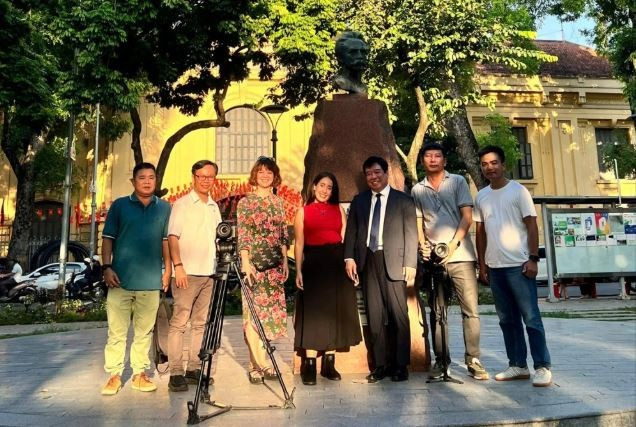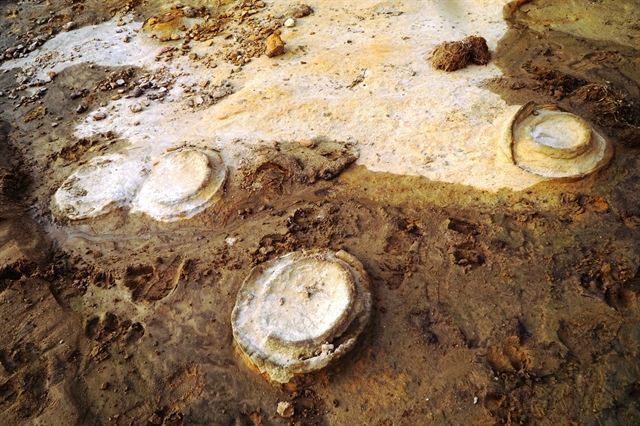 Life & Style
Life & Style

Fossils of ammonites, a group of extinct marine mollusk animals, have recently been found in Krông Pa District in the central province of Gia Lai, revealed by Nguyễn Quang Tuệ, the head of the local Department of Cultural Heritage Management.

GIA LAI — Fossils of ammonites, a group of extinct marine mollusk animals, have recently been found in Krông Pa District in the Central Highlands province of Gia Lai, said Nguyễn Quang Tuệ, the head of the local Department of Cultural Heritage Management.
Specifically, the fossils were discovered during Tuệ’s recent field trip to the river in Tơnia Village, Chư Gu Commune in Krông Pa, after receiving reports from the villagers.
There he discovered about 30 unknown objects, which he took photos of and sent to specialists for evaluation.
According to La Thế Phúc, former director of the Việt Nam Geological Museum, who has been undertaking many geological research projects in this area, such objects are fossils of ammonites, a group of extinct marine mollusk animals, which can be up to 100 to 250 million years old.
“The discovery of the fossils of ammonites in the south of Gia Lai Province continues to reinforce the previous assumption that the Central Highlands used to be a sea area,” he noted.
Earlier, fossils of ammonites were found in some other provinces like Cao Bằng or Đắk Nông; however, this is the first time that such prehistoric fossils were dug up in Gia Lai.
Together with the archeological information about the Stone Age and petrified wood that has been revealed in Phú Thiện District, Ayun Pa Commune, fossils of ammonites in Krông Pa District will enrich the geological and archeological heritages of the region.
Such fossils contain no economic values but only geological values to serve archaeological research; therefore, the local authority has recommended the locals not to follow rumours to excavate and damage the contemporary structure of the area where the fossils are found.
According to the plan of the Department of Culture, Sports and Tourism of Gia Lai, the department will coordinate with local authorities to take measures to encircle the heritage area in order to serve scientific research, education and tourism. — VNS




